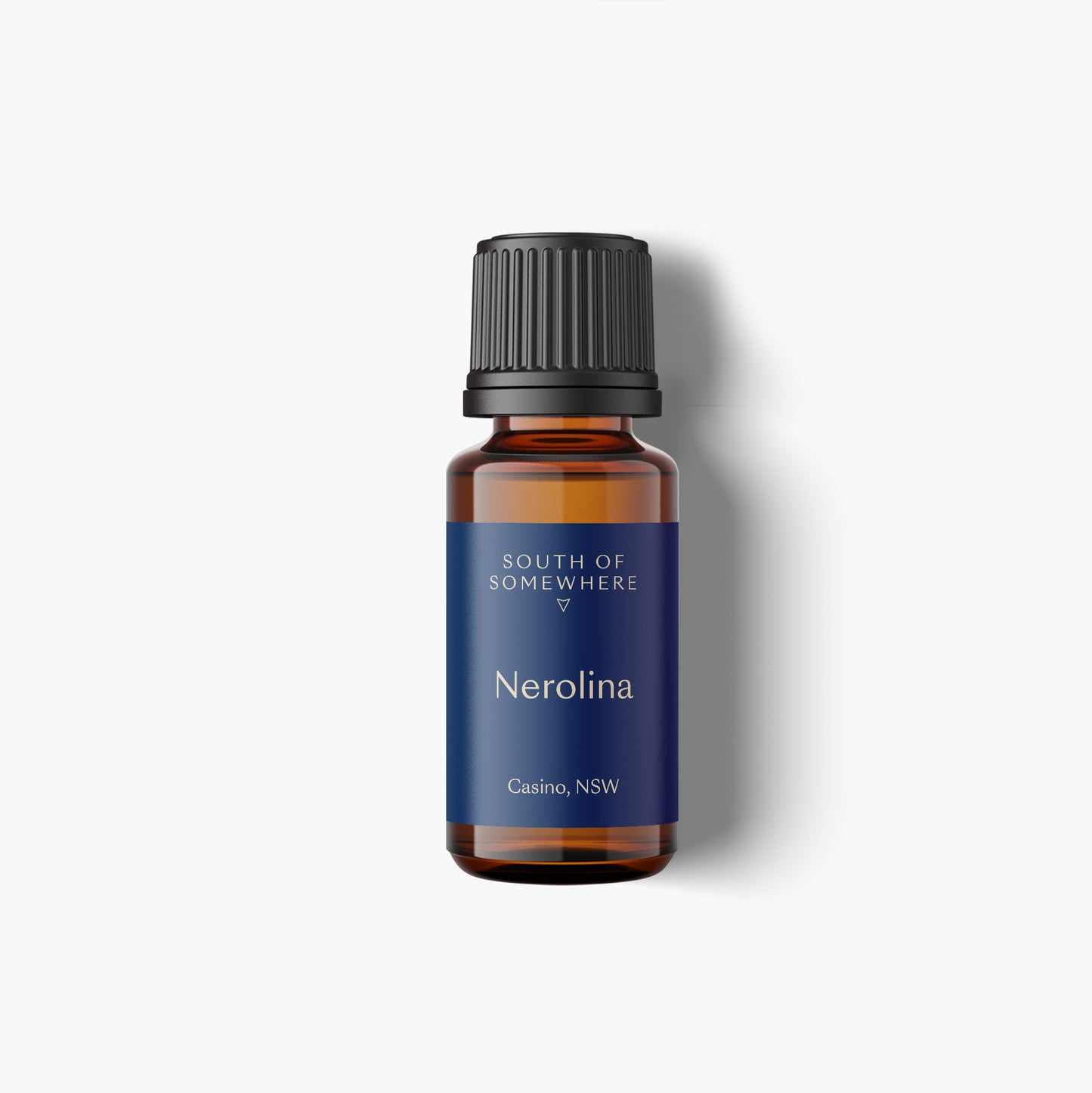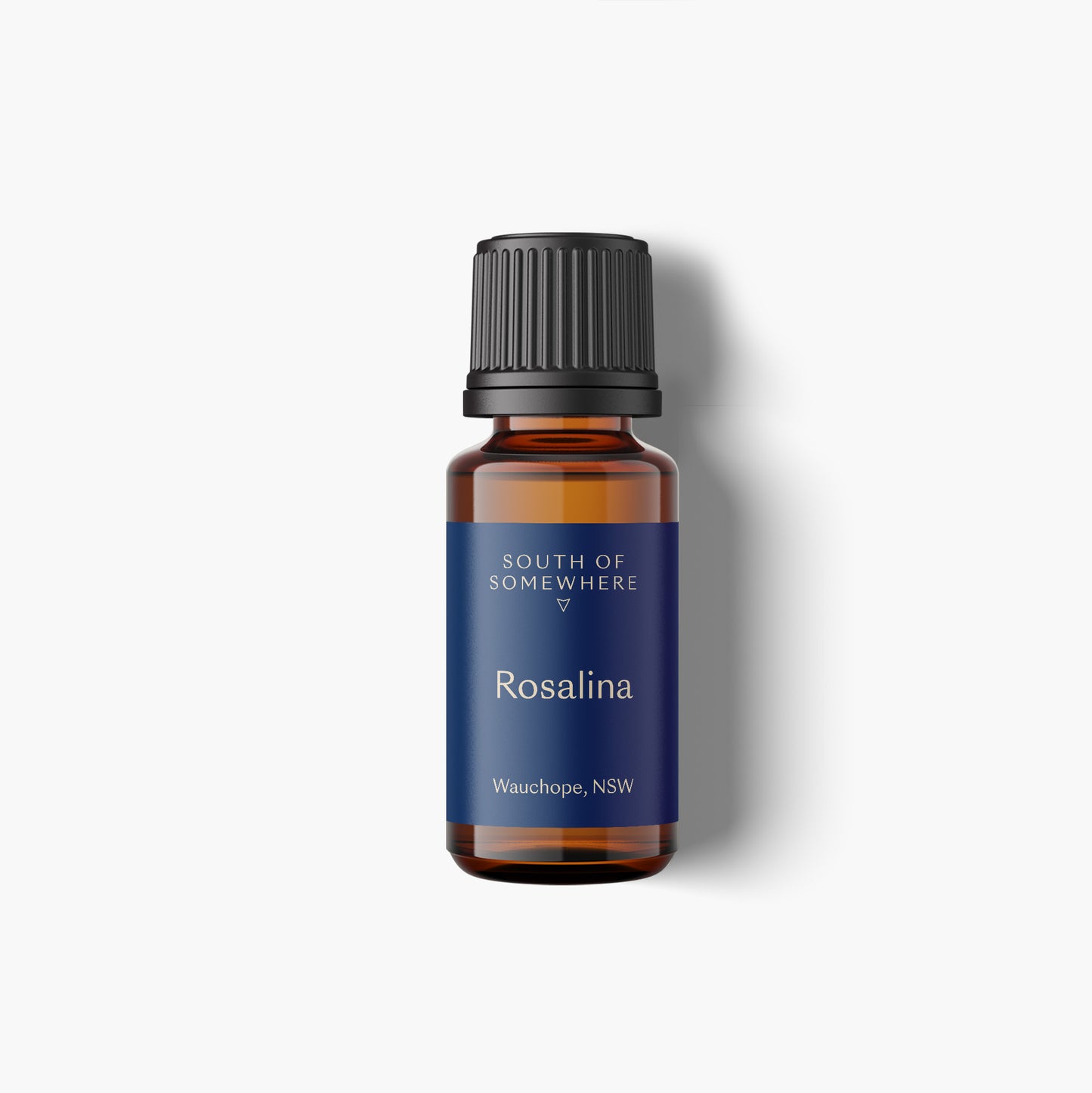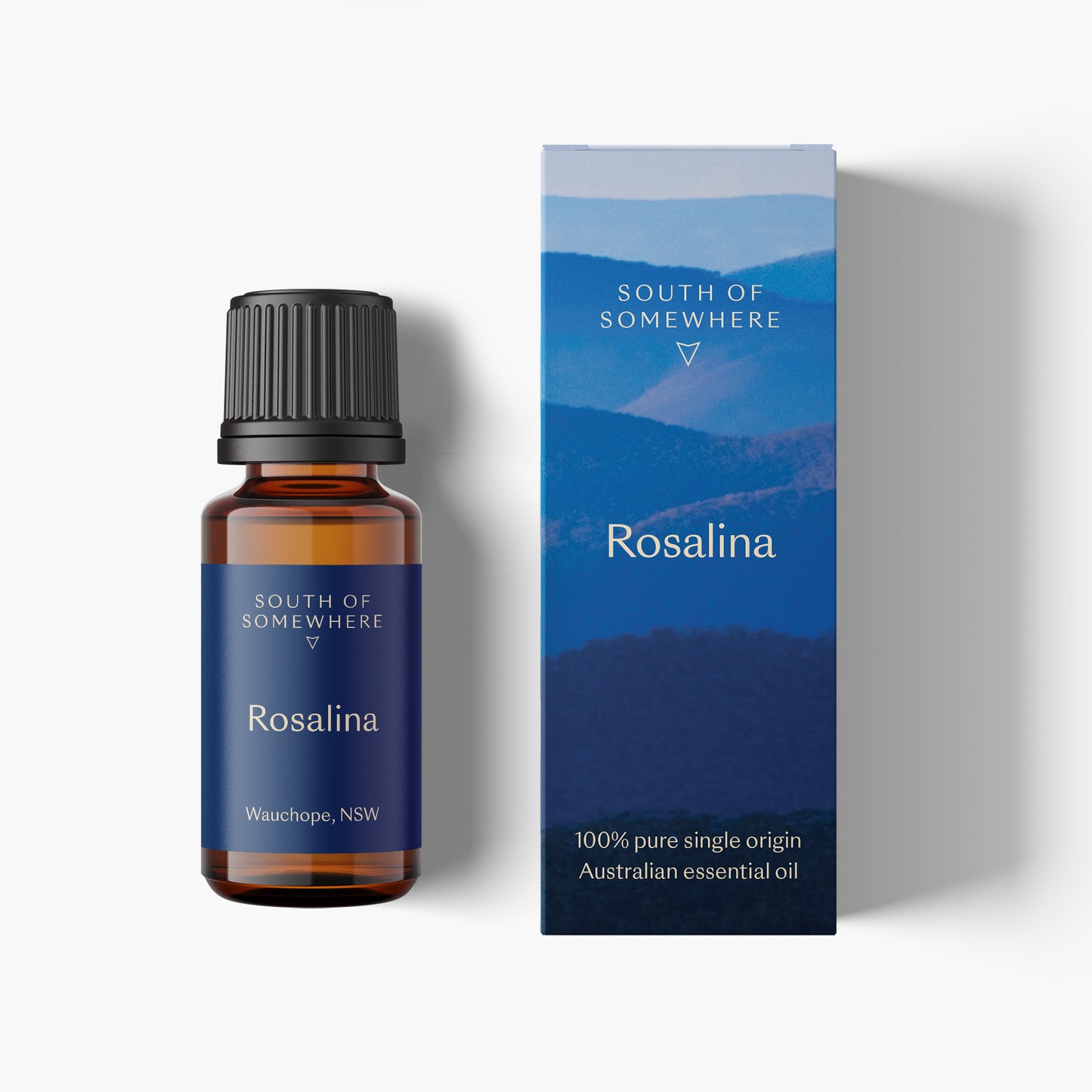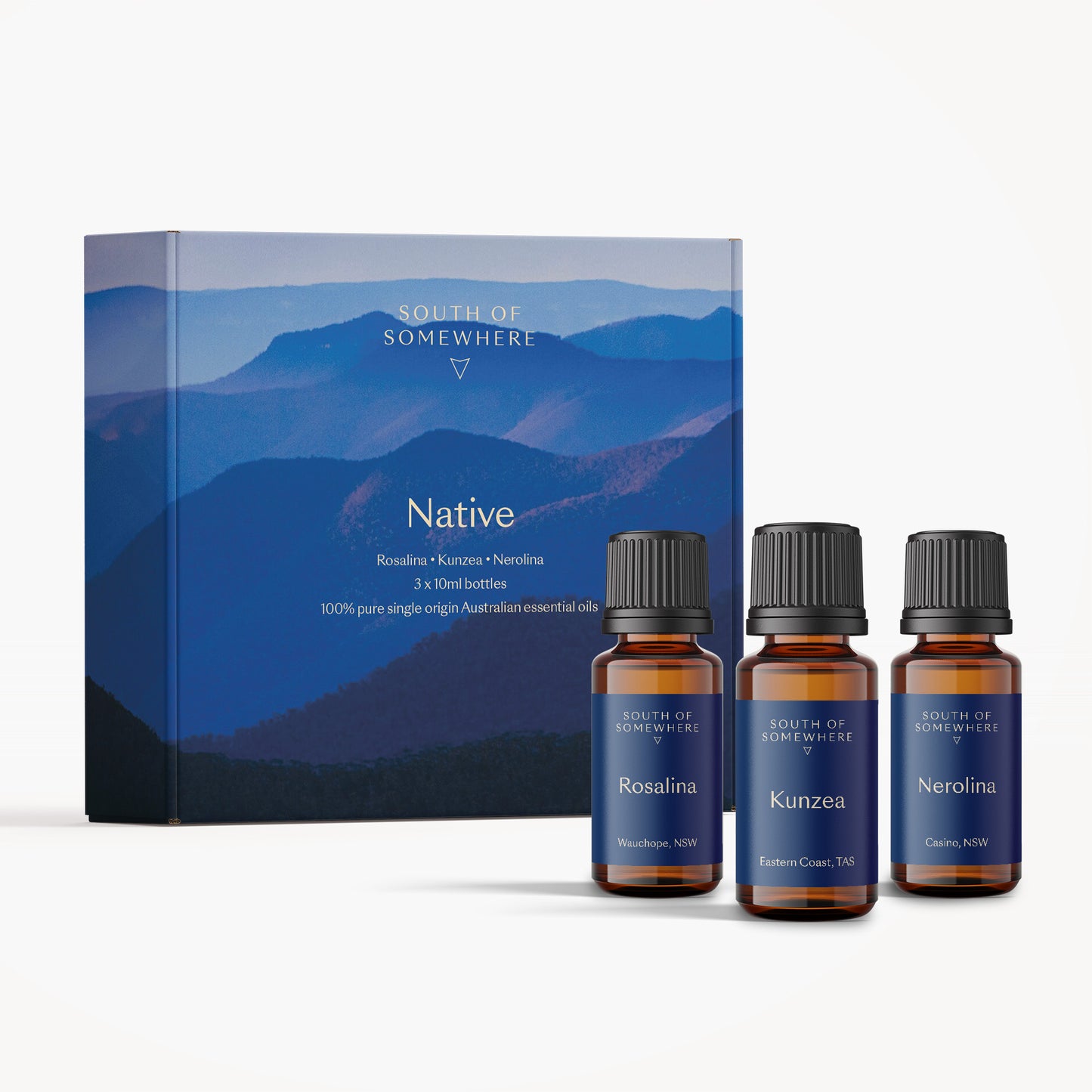
About Rosalina Essential Oil
With a gentle aroma, it is good for relaxing, calming nerves and improving sleep. Also helps ease headaches, prevent congestion and sinuses.
Based in Wauchope, this farm has been owned by the same family for four generations. With the beautiful Hastings River as a backdrop, and surrounded by an abundance of bird life, a deep focus on growing and using organic methods and principles is key to the high quality oils produced on this property.

History & Traditional Uses
This melaleuca has fragrant flowers which attract birds. It is a clonal species and efforts have been made to use this characteristic to increase the efficiency of rehabilitating swampy areas with this species.
Aboriginal people used the bark of this tree for paintings, blankets, and roofing for shelters. The wood was used for spears, clubs and digging sticks. Oil from the leaves was used for medicine and nectar from the flowers was used to make sweet drinks. The oil is thought to have been used in bush medicine for thousands of years. Indigenous Australians used the flowers of the plant to make herbal tea.
Rosalina is a calming and relaxing essential oi l and its sedative effect can help induce sleep and provide stress relief.
The calming effect of Rosalina can help with anxiety and reduce stress levels.

Agriculture, Harvesting & Distilling
Rosalina is a small tree, and will grow to only around 9 metres if left to its own devices. For oil production, the Rosalina trees are maintained as a bush, and cut to nearly ground level when harvesting. They coppice back better and stronger than ever. The yield of the oil output depends on the season, but is usually a consistently good oil producing crop. It is used often as a replacement for Tea Tree when a more subtle aroma is preferred.
Rosalina is harvested using a combination of hand and mechanical methods The shrub tops are placed into large bins along the way, and when full, taken to the stillhouse, and lid sealed tightly. The bin is connected up to the distillation system, and steam is passed through the leafy material with careful supervision. The steam rises taking with it the volatiles (oil) and then travels through the condenser. As it cools, the oil and water separates, and the oil is taken.
















